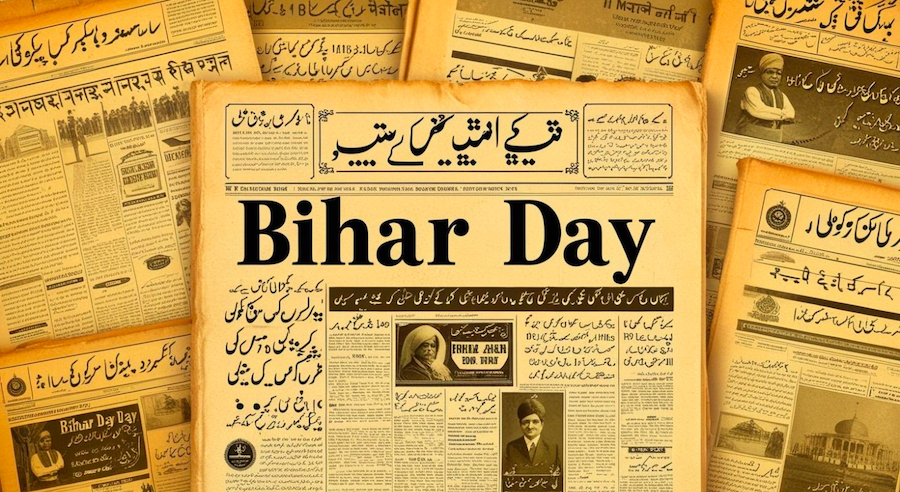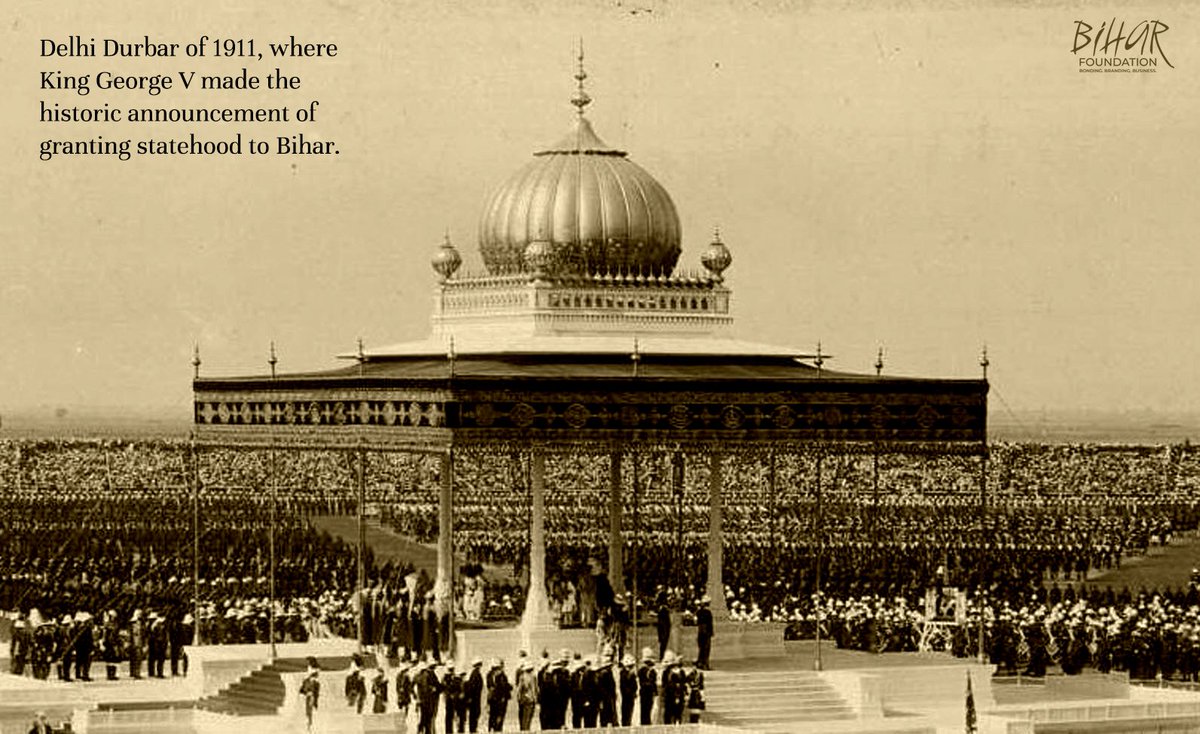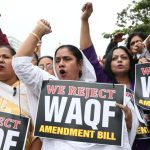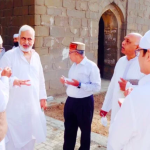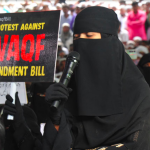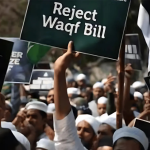On 13 March 2025, the headmistress of a government school in Gaya city was suspended. Her crime? She conducted the school prayer in Urdu. The children’s prayer carried the fragrance of love for the homeland. Expressing their patriotism in Urdu, they innocently and sincerely recited: “Ho mere dum se yun hi mere watan ki zeenat, Jis tarah phool se hoti hai chaman ki zeenat.” (May my homeland, through me, attain elegance, Just as the garden, through flowers, attains elegance.)
Even more “dangerous” was their heartfelt wish to serve the poor and the vulnerable: “Ho mera kaam ġareebon ki himaayat karna, Dardmandon se, za’eefon se muhabbat karna.” (May my life’s way be to support the needy, And to love the old and the grief-stricken.)
A shaken school teacher recorded a video and made it go viral. What followed is now well known to the people of Bihar.
The most bitter aspect of this incident was the stark revelation of the deep-seated hatred for Urdu that still festers in some hearts—hatred laid bare in full intensity. And this, in a state whose very foundation was shaped by the struggles of Urdu-speaking communities, a state that owes its existence in large part to the spirited campaigns waged by Urdu newspapers.
Who coined the slogan “Bihar for Biharis”?
Today, as Bihar marks 113 years of its existence, it is crucial to remember that the first call for an independent Bihar, separate from Bengal, was raised by Urdu newspapers. These newspapers first coined the slogan “Bihar for Biharis,” which later grew into a full-fledged movement.
The separation of Bihar from Bengal is undoubtedly a historic and revolutionary event in Bihar’s history. Urdu newspapers, in particular, played a pivotal role in this movement. Notably, publications like Murgh-e-Suleman, Qasid, and Nadir-ul-Akhbar were among the first to raise their voices to support the Bihari people. These newspapers strongly criticized the dominance of Bengalis in government jobs in Bihar. Jata Shankar Jha has elaborated on these aspects in his book Early Revolutionary Movement in Bihar.
The first Urdu newspaper published from Munger, Murgh-e-Suleman, raised the slogan “Bihar for the Biharis” in its issue of 7 February 1876. On 22 January 1877, the Urdu weekly Qasid, published from Patna, boldly condemned the union of Bihar and Bengal, stating that it was against the interests of the Bihari people. The newspaper also voiced concerns that “Bengalis often enjoy government patronage.”
Muhammad Sajjad, a professor at the Centre for Advanced Study in History, Aligarh Muslim University, and political analyst provides an in-depth analysis of this movement in his book Muslim Politics in Bihar: Changing Contours.
He writes, “In the last quarter of the nineteenth century and the first decade of the twentieth century, Bihar’s regional patriotism centered around the demand to carve out a separate province out of Bengal. This was the consequence of the fact that, till 1912, Bihar was an appendage to Bengal, and the educated Bihari middle class (Hindus and Muslims alike) were increasingly coming up against the fact of Bengali entrenchment in public services, and employment in general. Due to an early lead in education, the Bengalis had managed to get a larger representation in the government jobs of the province. Thus, the Hindus and Muslims cut their political teeth together in the demand for a separate province of Bihar, and forged a joint front in political activities… Along with Sachidanand Sinha and Mahesh Narayan (1850–1907), Muslim leaders such as Ali Imam, Hasan Imam, Mazharul Haq, and Md Fakhruddin fought jointly for a separate province of Bihar.”
Muhammad Sajjad, in his book, highlights the crucial role played by Urdu newspapers and magazines in the movement for Bihar’s separation. He notes: “Urdu periodicals played a particularly big role in raising this voice. The Nadir-ul-Akhbar of Monghyr (18 May 1874), the Murgh-e-Suleman of Monghyr (7 February 1876), the Qasid (22 January 1879), the Rais and Raiyat (16 September 1882) demanded separate province, as also did Al Panch (of Bankipur, Patna; launched in 1885 by Meer Ahmad Husain and Syed Raheemuddin, 1858–1903).”
Hindi newspapers opposed separate Bihar
Thus, the campaign initiated by Urdu newspapers caught the attention of the English-speaking leaders of Bihar, prompting them to launch their own campaign demanding a separate Bihar state. Interestingly, Hindi newspapers opposed this movement, as they did not want Bihar to separate from Bengal.
According to a research article by Sumita Singh published in the Proceedings of the Indian History Congress, Vol. 73 (2012), “The last decade of the nineteenth century was not a congenial period for Hindi journalism. Many Hindi papers were started but most of them died a premature death, as they had little support from the Hindi reading people. Bihar Bandhu was the only Hindi paper that continued its publication. The Hindi Papers had a different view on the separation movement. The Bihar Bandhu opposed the separation movement because it feared that after separation, Bihar would be deprived of many benefits, which it got under a Joint Lieutenant Governor.”
She wrote in her research article, “Urdu papers took a more progressive line than the Hindi papers with regard to the separation of Bihar from Bengal. The most outspoken among the Urdu papers was the Al-punch. In April 1896, it wrote a very strong article about the separation of Bihar from Bengal. It wrote that without separation the Biharis, backward in education as they were, would never be able to secure a fair share of the posts under government… On 15th May 1904, in an article in the Muslim Chronicle, Dilwar Hussain, a retired Inspector General of Registration and distinguished Muslim of Bengal supported the suggestion for the separation of Bihar and reminded the Biharis of their glorious past, cautioning them not to allow the opportunity to slip out of their hands.”
First Resolution for the Separation of Bihar from Bengal
The first session of the Bihar Provincial Conference was held in Patna in April 1908, presided over by Ali Imam. The conference was convened due to the Indian National Congress‘s disregard for the issue of Bihar’s separation from Bengal. During this conference, S. M. Fakhruddin moved the resolution calling for Bihar’s separation from Bengal.
According to Muhammad Sajjad, on 14 August 1908, the three leading public associations — Bihar Landholders’ Association, Bihar Provincial Association, and Bihar Provincial Muslim League — sent a joint deputation to the Lieutenant Governor to press this demand.
The fourth session of the Bihar Provincial Conference was held on 6 November 1911 in Gaya, Bihar. This Bihar Conference was presided over by Maulana Mazharul Haq.
According to a news report published in The Times of India on 7 November, Mr. Mazharul Haq congratulated Honorable Ali Imam on his appointment as a Law Member. At the same time, he spoke about the current awakening in Bihar, stating that “its activities were not based upon any hostility to anyone, and the desire of the people was that their legitimate rights and interests should be recognized. They had been shamefully neglected in the past and it could not be tolerated any longer.”
He further stated, “The public opinion in Behar was unanimous on ope point that they would neither agree to the status quo being restored, nor to a Governorship with a Chief Commissionership for Behar. They would co-operate with their brethren of Bengal in order to constitute Behar, Chota Nagpur, and Orissa into a separate Province and to pat the whole Bengalee-speaking people under another administration.”
The decisive resolution was passed during this fourth session, which called for: 1. The reunification of East and West Bengal, and 2. The separation of Bihar, Orissa, and Chota Nagpur into a distinct governorate.
Following this meeting, the government recognized that the growing regionalism among Biharis could no longer be ignored. As a result, it was decided to grant Bihar separate status. This decision was set to be formally announced by the British monarch, who was scheduled to visit India soon. In December 1911, King George V arrived in Delhi and, on December 12, declared that Bihar, Chhota Nagpur, and Orissa would soon be organized as a separate province. This new province would be administered under a “Lieutenant Governorship in Council.” Finally, on March 22, 1912, Bihar was officially established as a separate province.
Happy Bihar Day to the people of Bihar! On this occasion, let us remember the role of these Urdu newspapers and all those who contributed to the campaign for the separation of Bihar from Bengal.

